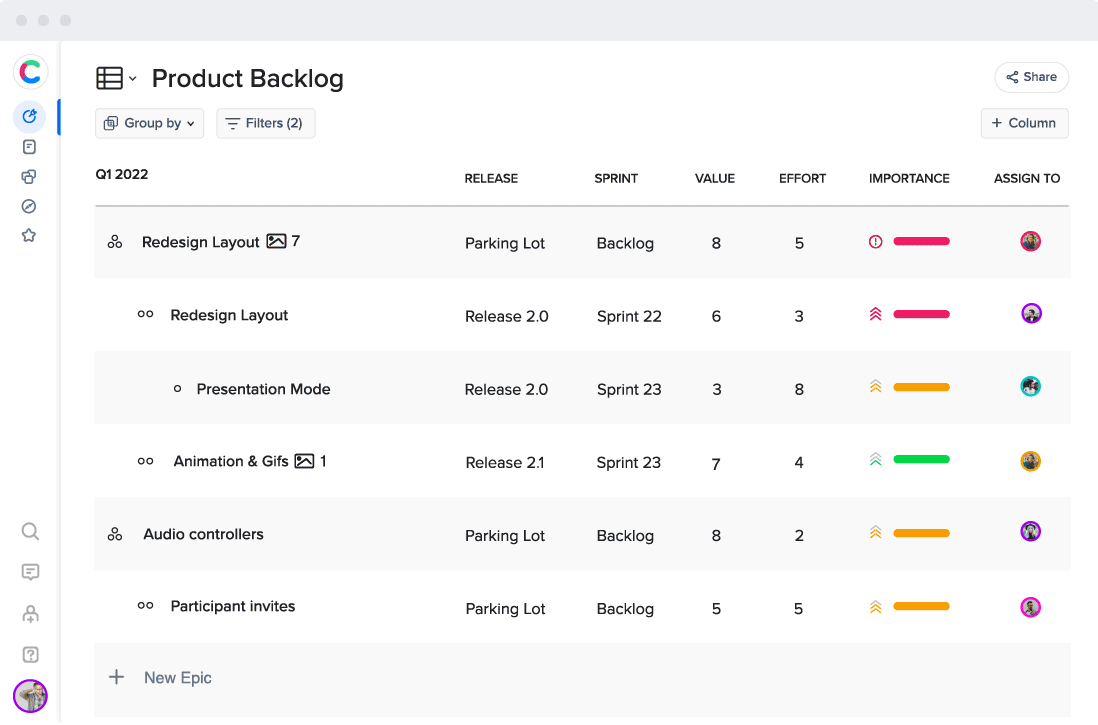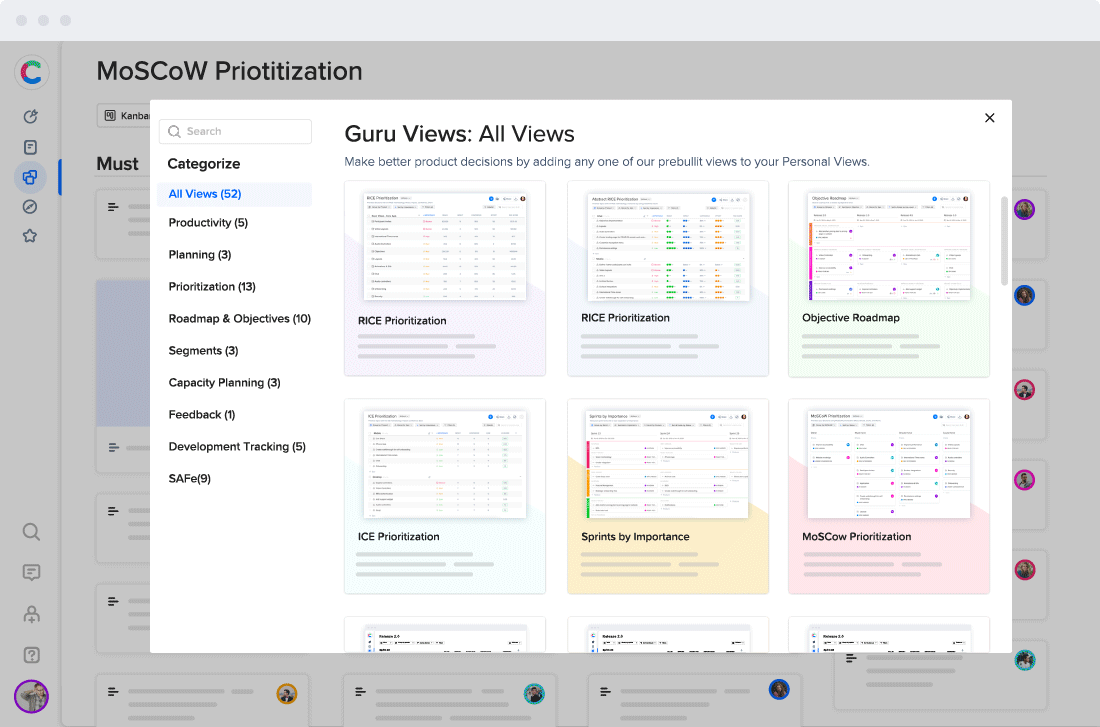Home > Blog > Shift Your Company to a Product Mindset (Webinar Video Included)
Shift Your Company to a Product Mindset (Webinar Video Included)

For many businesses selling SaaS software and other modern tech solutions, the product mindset is built right into the corporate culture. But companies in older industries, such as bricks-and-mortar retail stores, have yet to embrace the product mindset – or, in many cases, even the product management role in general.
So craft.io CEO Elad Simon recently hosted a webinar with Matt Jackson, Group Product Manager of Kingfisher plc – one of Europe’s largest retailers (and a craft.io customer) – to discuss Matt’s experience guiding the organization from a “delivery” or “project” mindset to a more strategic, product-oriented focus. The insights and tips below are taken from the webinar – The Enterprise (R)evolution: How to Effectively Adopt a Product Mindset.
What Exactly Is the Product Mindset?
Contrary to a common misconception, the product mindset isn’t only about showering more resources on developing and selling a company’s products. It’s a companywide approach that also means treating the organization’s internal processes, initiatives, and technology solutions with the same care and attention to detail as the company devotes to its customer-facing products.
As Matt explains, this means subjecting any of these internal decisions to the same scrutiny that a product management team applies to its product decisions, including:
- Identifying the root of the problem, then determining the best strategic solution.
- Using data to inform priorities and other decisions.
- Listening to the customer (who might be an internal stakeholder).
- Verifying that the initiative will add real value to the organization before moving forward.
So, what’s the opposite of the product mindset?
As Matt also explains, the product mindset is in sharp contrast with the legacy philosophy most organizations still follow, which he describes as being delivery-led or project-led.
For many businesses in older industries, Matt says, neither the customer-facing products nor the company’s internal processes and tech stack have dedicated “product” advocates proactively identifying problems and strategically vetting potential solutions.
Instead, someone in the organization – a business analyst, a department head, a board member – says, “Build this” or “Buy that” or “Implement this process.” Then, with no team there to delve deeper into the real reason behind the request, or search for better possible alternatives, the appropriate teams in the company simply begin executing.
This, Matt believes, is the fundamental difference between being a delivery-led organization and applying the valuable strategic elements of the product management approach.
Shifting Your Company Culture Toward the Product Mindset
During the webinar, Matt offers a key insight about how adopting the product mindset can help improve any aspect of the company’s operations. He notes that if a business’s stakeholders could break free of thinking about their internal technology environment as tools and systems – and instead view them as strategic solutions being deployed for customers – they’d more easily recognize that any of those internal systems:
- Should be built only after being subjected to strategic review and then only if it can demonstrate real value to the business. It shouldn’t be built just because someone asked for it.
- Should receive the green-light only after the product team identifies the actual problem behind the request and then, through research, determines the best solution for that problem – which might be something different from what the stakeholder requested. In other words: Let’s find the root cause and figure out how to solve that.
- Needs a team of strategic professionals making sure the solution has all the capabilities the requestors need, is being built on time and on budget, etc.
- Needs those strategic advocates to be able to communicate the details of what’s needed to developers in a language they understand.
Don’t Rush Product Transformation (It’s a Slow Process)
If you’re a Product Manager interested in guiding your company from a delivery-led culture to a strategic, product-focused approach, Matt’s most important piece of advice is this: Be patient.
He says you need to keep in mind that these two approaches to building and improving your company’s operations (as well as your customer-facing products) are fundamentally different – the organization’s culture is pointing north, and you want to redirect it 180 degrees to face south.
That’s going to take time and require you to aim for small strides in the right direction. Rather than trying to convince everyone in the company to shift immediately to the product mindset, Matt offers these recommendations.
1. Find (or grow) your internal support team.
One way to build momentum for any transformation is with a team. Find like-minded people in your organization who can help you spread the message about the values of building strategic product management principles into your operations. You’ll need a team to build a movement.
2. Spend time on stakeholder management.
A related suggestion is to dedicate time – a lot more time than you probably think, Elad says during the webinar – trying to persuade your stakeholders about the virtues and benefits of the product mindset. Just focus on small wins where you can get them – and build on those wins. Don’t try to convince everyone to make this massive change during one meeting. That’s an overreach and will likely backfire.
3. Find a champion at the senior-leadership level.
Matt says that among the transformations he’s been involved in at various companies, the most successful have been the ones where the change advocates had an ally at the top of the organization also advocating for the shift.
4. Be patient. It’s going to take time.
Matt also points out that people don’t want to feel forced, pressured, or rushed into big changes. So you’ll need to be more subtle and bring them with you on this journey in small steps – so small and so logical, in fact, that it won’t even seem like they’re making a change at all.
As an example, Matt explains his experience in a previous role at Tesco, one of Britain’s largest supermarket chains, where he helped to guide a large organizational transformation.
“I used the North-South metaphor there as well,” Matt says. “And a colleague turned to me and said, ‘You’ve got us pointing South over the last two years, and we haven’t realized you’ve done it.’ That’s what success looks like – chipping away, changing their thinking. Slowly.”
5. Use the right tools.
Finally, Matt points out that to effectively apply the strategic principles of product management to your organization’s internal initiatives, you’ll also need the proper tools. And for Kingfisher, one of those tools is the craft.io end-to-end product management platform.
This platform allows Kingfisher’s product teams to capture and manage strategies, prioritize items, monitor capacity levels, and analyze feedback on their internal and customer-facing products in one unified digital environment – to more accurately see the big pictures and make better-informed decisions.

Book a free best-practice session with a Product Executive
How to Get into Product Management
Toward the end of this webinar, Matt offers some excellent insights and ideas for people interested in a product management career. We won’t steal his thunder here, but we promise you that they’re valuable, practical ideas. Watch the webinar to learn what a Product Leader advises new entrants to the profession.
But we will give you one of his suggestions: Familiarize yourself with the craft.io Guru Views (our built-in best practice views for all sorts of product management work).

And with that tip in mind, the great news is that you can…


